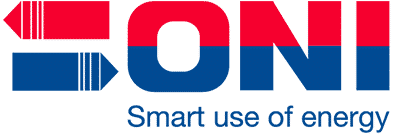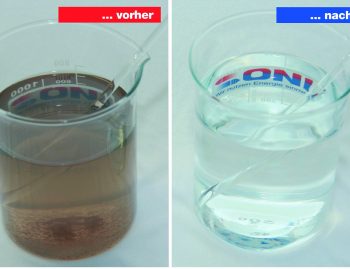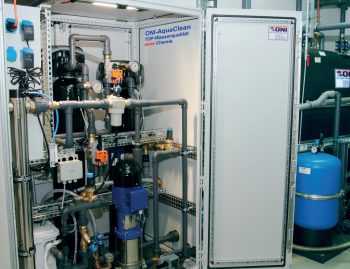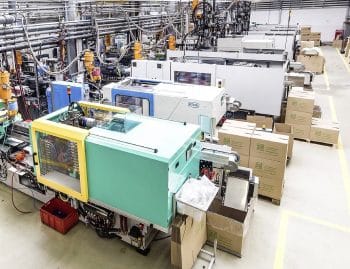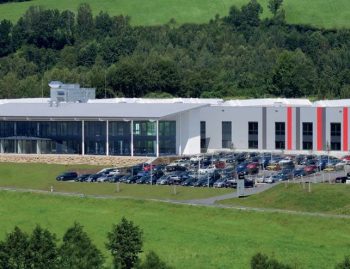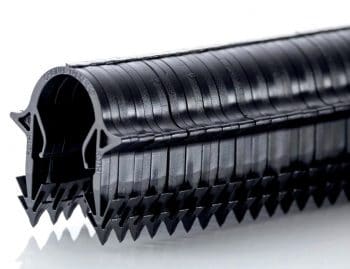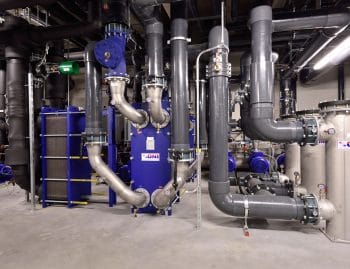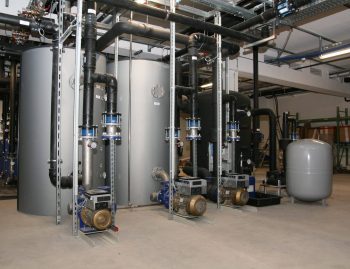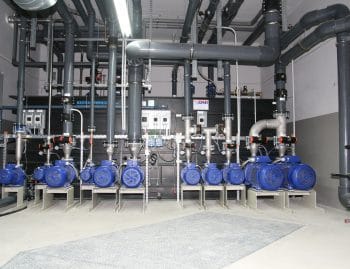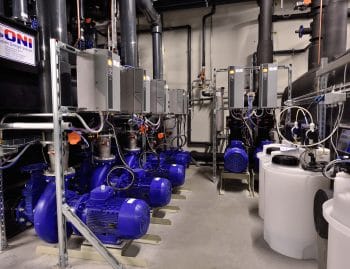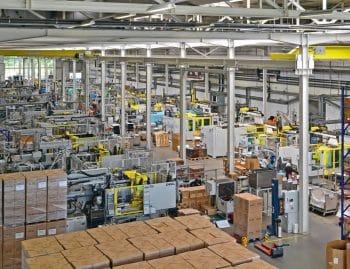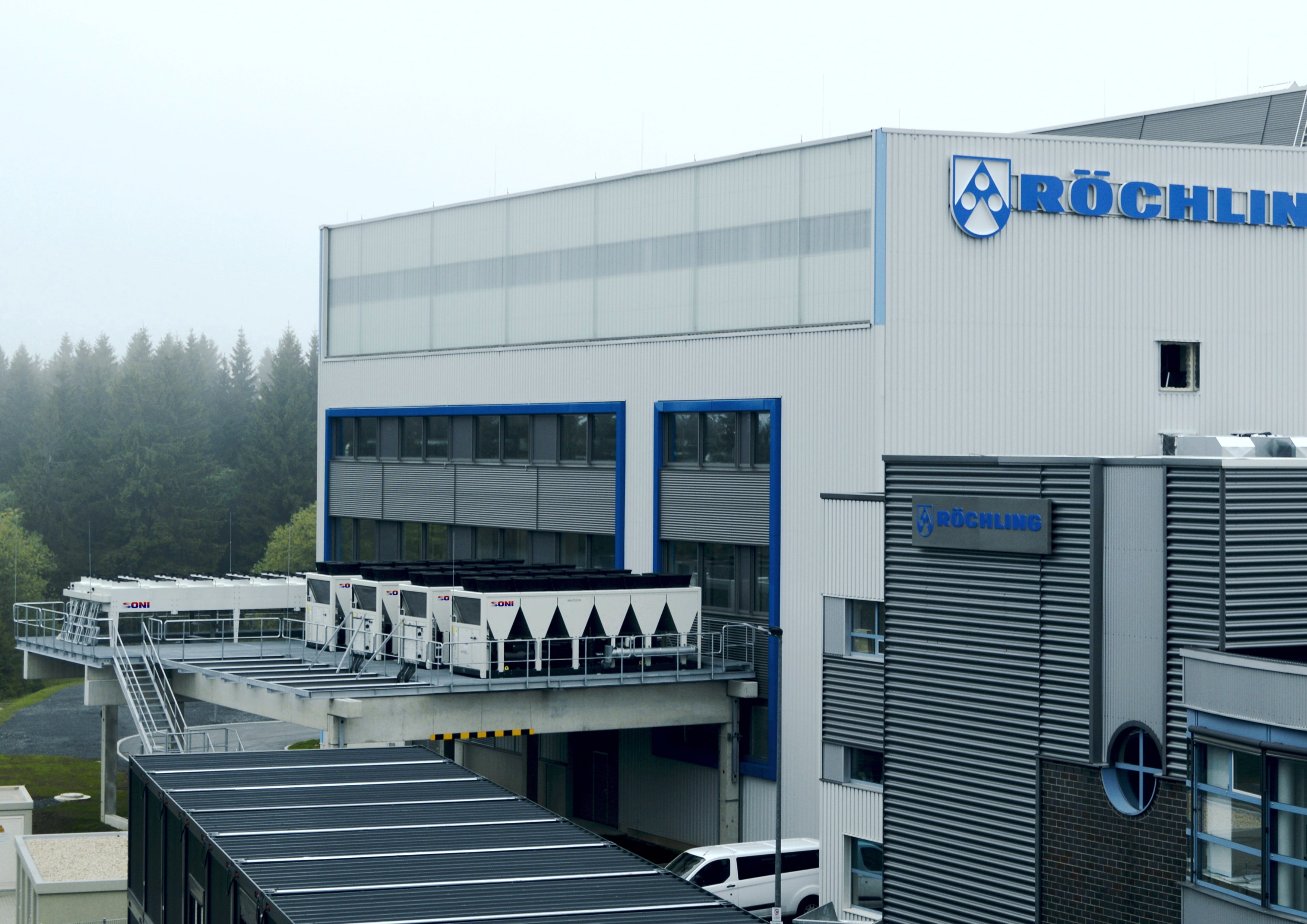
Röchling has been working with ONI's energy-efficient technology for around 20 years. The plant constructor has also drawn up an energy concept for the currently completed new building.
The Industry sector serves almost all sectors of industry with application-specific optimal materials. Röchling has probably the most comprehensive product portfolio of thermoplastics and thermosetting plastics in the world for this purpose. Semi-finished products such as plates, round, hollow and flat bars, castings and profiles as well as machined and assembled precision components are manufactured. The Automotive Division stands for components and system solutions in the fields of aerodynamics, propulsion and new mobility. In its development close to the customer and globally present, the focus is on the current challenges facing the automotive industry: reducing emissions, weight and fuel consumption. The medical division offers its customers a wide range of customized products, as well as plastic standards for the pharmaceutical, diagnostics, surgery and life science sectors. The high-quality products are used in innovative administration and primary packaging systems, surgical instruments and disposable diagnostic articles.
The positive development of the company inevitably leads to expansions or complete new construction measures at various locations. The Neuhaus site, which is a leading production and development facility in the field of low-germ, functional and high-quality packaging systems for pharmaceuticals, diagnostics and medical technology, was further expanded. "For about 20 years, we have been relying on energy-saving technology from ONI. Reliable technology, energy efficiency and first-class technical support are the main reasons for this long-standing relationship. For this reason, we also had ONI experts draw up an energy concept for the recently completed new building. Like the other two system concepts installed in our company, the new concept was also convincing and gave us the certainty that we are optimally positioned for the future in terms of security of supply and energy efficiency," says Managing Director Alexander Stauch, summarizing the reasons for continuing the cooperation with the system manufacturer.
Röchling owes its outstanding market position to its particularly pronounced strengths in the areas of innovative strength, production know-how, flexibility, reliability and service. A key objective in energy-intensive plastics processing is the continuous improvement of energy efficiency in conjunction with optimization in the area of process reliability. For years, an offensive energy-saving policy has been pursued in the field of energy supply. A current example of this is the construction of a new production hall with more than 6900 square meters of floor space at the Neuhaus site.
Setting the course for efficiency
The efficiency of the media supply is decisively determined by the system selection and configuration of the operating parameters. For this reason, Röchling Medical in Neuhaus has consistently opted for a low-temperature supply or utilization concept and lowered system parameters in all other areas to a minimum level in order to ensure the best possible conditions for maximum utilization of the primary energies used or their multiple utilization through the use of heat recovery systems.
Cooling water with a flow temperature of around ten degrees Celsius is required all year round to cool the injection moulds. Today, electrically driven chillers are still used in many cases throughout the year to generate the cooling water, which leads to considerable cost burdens due to high electricity consumption. In Neuhaus, the ONI concept therefore provides for a cooling energy supply via cooling machines only in the warm summer months and a short transition period.
For this purpose, the cooling energy supply system for the tool circuit with a capacity of approximately 350 kilowatts was equipped with a so-called ONI winter relief via glycol-free, idle free coolers. With this technology, the ambient air, which is available free of charge, is used as the cooling medium during the transition and winter seasons. The electrical energy required is reduced to a value of about two to three percent of that of a chiller. Due to the altitude of Neuhaus with more than 800 meters, it is really ensured that the cold water supply via chillers is kept at a minimum level.
Heating with cooling
To heat a company with several thousand square meters of production, office and storage space, a lot of natural gas or heating oil is usually required. The heating energy consumption and the resulting operating costs are therefore not insignificant. Röchling Medical in Neuhaus has found a much more efficient approach to heat supply by using free waste heat: The cooling energy supply for the hydraulics of the injection moulding machines and the cooling circuit for the water-cooled air compressors were identified as particularly attractive sources.
In this specific case, injection moulding and other production machines require cooling water with a temperature spread of 30/35 degrees Celsius and a recooling capacity of around 350 kilowatts to cool hydraulic units. In addition, production processes require the provision of a high compressed air output. To ensure the best possible use of waste heat in this area, water-cooled air compressors were used. This requires a cooling capacity of around 850 kilowatts with a cooling water temperature spread of 30/40 degrees Celsius. This means that in the areas of machine and compressed air cooling alone, a cooling water supply capacity of up to 1200 kilowatts is required, which is available as waste heat after actual use. From the total available waste heat flow, at peak 1200 kilowatts, an output of 650 kilowatts is first decoupled via a heat exchanger and fed into a total of three user circuits. In addition to the ventilation system as the main customer, the underfloor heating and room heating areas are supplied with the waste heat. In a second step, or after a further construction project has been completed, the remaining 550 kilowatts of waste heat will be fed into specially designed circuits as heating heat.
"For the various divisions of the company, especially in the production zones, the respective requirement profiles for the air conditioning conditions are clearly defined and ensured throughout the year by suitable systems. The sensitive product portfolio determines our spectrum, which ranges from simple ventilation to clean room technology at the highest level. Because we know that the air conditioning/ventilation sector requires a considerable amount of energy, we looked from the outset for ways to reduce energy consumption and ultimately found ways of using our own waste heat sources through ONI experts," says Alexander Stauch, describing the problem and the energy-efficient solution found.
In concrete terms, the air supply for the injection moulding area is provided by a central zone unit. The ventilation unit is equipped with one heat exchanger unit each for heating and cooling operation. The heat exchanger for cooling operation was designed for an output of 415 kilowatts with a cooling water temperature spread of 6/12 degrees Celsius and the one for heating operation for an output of 340 kilowatts with a heating water temperature spread of 37/32 degrees Celsius. Thanks to the appropriate thermal design of the heating register, almost 100 percent of the heat required over the year can be covered by the waste heat from the injection molding machines or compressed air compressors and energy costs can be kept at a sustainable minimum!
Pro Economy and Ecology
In hardly any other area does the implementation of an energy-saving measure have such a strong effect as in the supply of cooling water. The right choice of system technology and temperature spread creates the basis for low costs in primary cooling water generation. By using heat recovery, heating costs are massively reduced because free waste heat replaces expensive primary energy sources such as heating oil or natural gas. At the same time, heat recovery ensures that no separate recooling of the cooling water is required during waste heat recovery. Through the use of particularly energy-efficient chillers and an attached winter relief, the electricity input for the cold water supply of the mold cooling is brought to a minimum value. All in all, the consistent implementation of the requirements defined by Röchling Medical in Neuhaus does not only result in the energy cost share being reduced to a minimum. This energy concept, planned and implemented by ONI experts, also sets an example with regard to active environmental protection. The example shows that economy and ecology benefit equally from the use of energy-saving measures.
